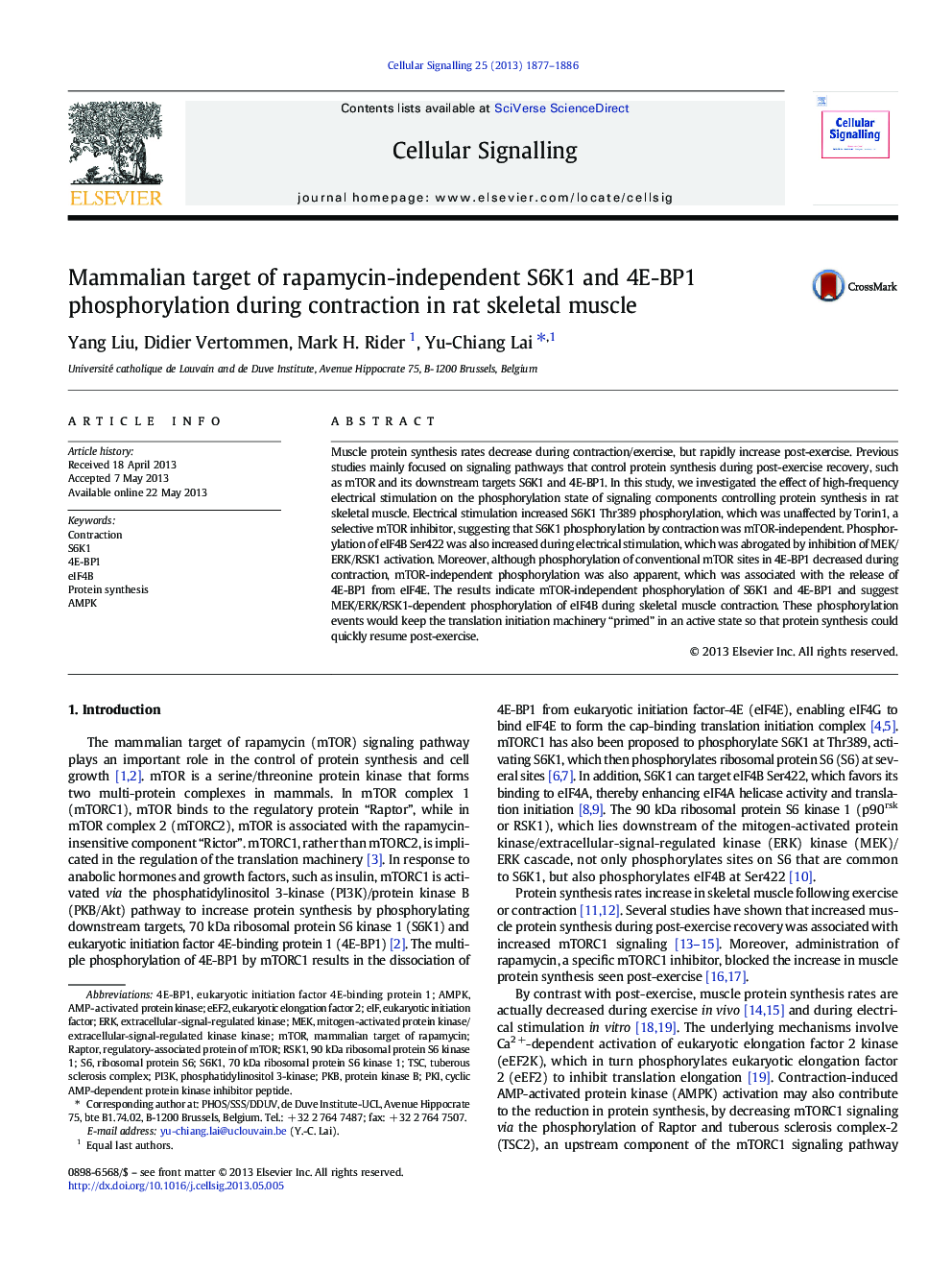| کد مقاله | کد نشریه | سال انتشار | مقاله انگلیسی | نسخه تمام متن |
|---|---|---|---|---|
| 10815439 | 1058473 | 2013 | 10 صفحه PDF | دانلود رایگان |
عنوان انگلیسی مقاله ISI
Mammalian target of rapamycin-independent S6K1 and 4E-BP1 phosphorylation during contraction in rat skeletal muscle
دانلود مقاله + سفارش ترجمه
دانلود مقاله ISI انگلیسی
رایگان برای ایرانیان
کلمات کلیدی
PKBeukaryotic initiation factor 4E-binding protein 1RSK1eIF4B70 kDa ribosomal protein S6 kinase 1PKI4E-BP1eEF2S6K1AMPKPI3KTSCERKmTORAMP-activated protein kinase - AMP-پروتئین کیناز فعال شده استeIF - EIFContraction - اختصارRaptor - رپتورProtein synthesis - سنتز پروتئینeukaryotic elongation factor 2 - عامل طولانی شدن یوکاریوتی 2Eukaryotic Initiation Factor - عوامل آغازگر یوکاریوتیPhosphatidylinositol 3-kinase - فسفاتیدیلینواستیل 3-کینازMEK - مجاهدین خلقmammalian target of rapamycin - هدف پستانداران رپامایسینRibosomal protein S6 - پروتئین Ribosomal S6regulatory-associated protein of mTOR - پروتئین مرتبط با تنظیم کننده mTORprotein kinase B - پروتئین کیناز BTuberous sclerosis complex - کمپلکس توبروس اسکلروزیسextracellular-signal-regulated kinase - کیناز تنظیم شده خارج سلولی سیگنال
موضوعات مرتبط
علوم زیستی و بیوفناوری
بیوشیمی، ژنتیک و زیست شناسی مولکولی
زیست شیمی
پیش نمایش صفحه اول مقاله

چکیده انگلیسی
Muscle protein synthesis rates decrease during contraction/exercise, but rapidly increase post-exercise. Previous studies mainly focused on signaling pathways that control protein synthesis during post-exercise recovery, such as mTOR and its downstream targets S6K1 and 4E-BP1. In this study, we investigated the effect of high-frequency electrical stimulation on the phosphorylation state of signaling components controlling protein synthesis in rat skeletal muscle. Electrical stimulation increased S6K1 Thr389 phosphorylation, which was unaffected by Torin1, a selective mTOR inhibitor, suggesting that S6K1 phosphorylation by contraction was mTOR-independent. Phosphorylation of eIF4B Ser422 was also increased during electrical stimulation, which was abrogated by inhibition of MEK/ERK/RSK1 activation. Moreover, although phosphorylation of conventional mTOR sites in 4E-BP1 decreased during contraction, mTOR-independent phosphorylation was also apparent, which was associated with the release of 4E-BP1 from eIF4E. The results indicate mTOR-independent phosphorylation of S6K1 and 4E-BP1 and suggest MEK/ERK/RSK1-dependent phosphorylation of eIF4B during skeletal muscle contraction. These phosphorylation events would keep the translation initiation machinery “primed” in an active state so that protein synthesis could quickly resume post-exercise.
ناشر
Database: Elsevier - ScienceDirect (ساینس دایرکت)
Journal: Cellular Signalling - Volume 25, Issue 9, September 2013, Pages 1877-1886
Journal: Cellular Signalling - Volume 25, Issue 9, September 2013, Pages 1877-1886
نویسندگان
Yang Liu, Didier Vertommen, Mark H. Rider, Yu-Chiang Lai,